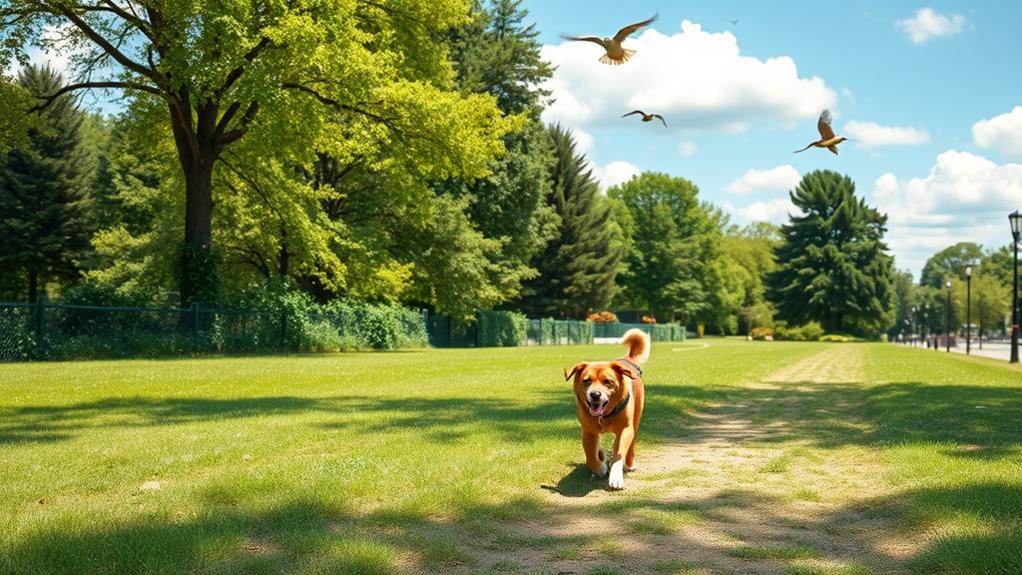Kylie knows that dreaded feeling – her dog is pulling on the leash, and she’s struggling to keep up. Many owners rely on prong collars, but this alone often falls short. Effective leash training requires more than just a simple correction. By mastering the art of properly timed U-Turns and subtle reminder taps, owners can gain better control over their pets. When combined with e-collar conditioning and rewarding desired behaviors, true loose leash walking is achievable. But how does one put it all together and avoid the common pitfalls that can derail even the best-intentioned training efforts?
Understand Prong Collar Limitations
The prong collar, often touted as a solution to leash-pulling woes, has its limitations. While it can be an effective tool in correcting pulling behavior, it doesn’t always solve the issue.
Many dogs continue to pull and walk ahead, with the leash remaining taut, indicating a lack of loose leash walking. The prong collar alone isn’t enough to fix the pulling problem; proper technique and timing are required to deliver corrections effectively. Without these, the prong collar’s effectiveness is diminished.
To achieve lasting results, it’s crucial to understand the prong collar’s limitations and incorporate additional training techniques, such as corrective u-turns and reward-based training, to address leash-pulling behavior thoroughly.
Mastering U-Turn Techniques

Mastering U-Turn Techniques
Mastering U-Turn Techniques is essential in addressing leash-pulling woes. Two types of U-Turn techniques can be employed: Corrective and Reward U-Turns. A Corrective U-Turn involves a sudden turn, creating a pop on the prong collar, while a Reward U-Turn gives the dog a gentle pop, allowing them to come to the handler and receive a reward.
| Technique | Purpose | Effect |
|---|---|---|
| Corrective U-Turn | Correct pulling behavior | Creates a pop on the prong collar, getting the dog’s attention |
| Reward U-Turn | Introduce the concept of U-Turns | Associates the pop with a positive outcome, priming the dog for corrections |
| U-Turn Correction Process | Gradually increase correction intensity | Improves pulling behavior, encouraging the dog to check in with the handler |
Effective Sudden Stop Corrections
Beyond the corrective u-turn, another powerful technique for addressing leash-pulling woes is the sudden stop correction. This technique involves abruptly stopping when the dog is pulling on the leash, creating tension and discomfort for the dog. By doing so, the dog learns to pay attention to the handler’s movements to avoid the sudden stop.
Unlike the u-turn correction, the sudden stop is harder to predict, which makes it particularly effective. When the dog stays in the desired position next to the handler, they’re rewarded. Consistency is key when using this technique. The handler must perform the sudden stop immediately when the dog pulls, without hesitation, to correct the behavior effectively. With repetition, the dog will learn to walk calmly by the handler’s side.
Perfecting Corrective Techniques

Corrective techniques like the sudden stop correction are highly effective in addressing leash-pulling woes, but they require precision and consistency to be truly effective. To perfect these techniques, it is crucial to understand the underlying principles and timing involved. A well-executed corrective technique can greatly improve the pulling issue, making walks more enjoyable for both dog and handler.
| Technique | Purpose | Key Considerations |
|---|---|---|
| Sudden Stop | Correct pulling before it escalates | Abrupt, but not harsh; use to regain control |
| U-Turn | Correct behavior before it becomes a problem | Loose leash before initiating; don’t look back at dog |
| Reward U-Turn | Introduce concept of corrective u-turn | Associate pop with positive outcome; not a full correction |
| Corrective U-Turn | Deliver correction at moment of turn | Dog may yelp; don’t pull dog to catch up |
Using Reminder Taps Wisely

A gentle reminder can go a long way in maintaining a loose leash. When a dog starts to pull, a subtle tap on the leash can refocus their attention on the handler. This technique, known as a reminder tap, is used for minor infractions, not major pulling issues.
The tap should be light, similar to tapping a nail into a wall, and its intensity adjusted based on the dog’s response. By using reminder taps wisely, handlers can prevent their dogs from targeting or misbehaving. Consistency is key, as dogs thrive on predictability.
Handlers should deliver reminder taps at the exact moment the dog starts to pull, making it clear what behavior is being corrected. This helps maintain a loose leash and reinforces desired walking behavior.
Paired Training for Success

When combining prong collar training with electronic collar (e-collar) conditioning, handlers can access a powerful tool for achieving loose leash walking. By pairing these methods, owners can reinforce previous training while introducing off-leash capabilities.
To utilize this strategy effectively, the dog should first be properly acclimated to the e-collar. A well-executed combination approach allows for additional cues, giving owners improved control and consistency in leash training.
The incorporation of e-collar conditioning should only occur once the dog is familiar with prong collar corrections, such as corrective u-turns and sudden stops. This sequential introduction guarantees clear communication, making it more likely that the dog responds positively to these cues and ultimately acquires the ability to maintain loose leash walking.
Achieving Loose Leash Walking

Beyond mastering corrective techniques, achieving loose leash walking requires a handler to cultivate their dog’s ability to walk calmly by their side, responding promptly to subtle cues. A loose leash isn’t just a matter of not pulling, but also of the dog being attentive and responsive to the handler.
To achieve this, handlers must focus on rewarding desired behavior and using gentle reminders to correct minor infractions.
Here’s what loose leash walking looks like:
- Leash hangs loose: The leash is relaxed, with no tension, as the dog walks by the handler’s side.
- Dog’s attention is on the handler: The dog is focused on the handler, responding promptly to cues and subtle body language.
- Handler and dog move in sync: The handler and dog walk together, their movements fluid and coordinated, like a well-practiced dance.
Conclusion
She successfully curbs leash-pulling by combining prong collar training with e-collar conditioning and positive reinforcement. Mastering corrective techniques like U-Turns and sudden stops helps her establish a reliable loose leash. By perfecting timing and incorporating reward-based reminders, she achieves consistent results. With paired training and attention to subtlety, she develops a dog that responds promptly to cues, yielding a stress-free walking experience. Effective leash control becomes second nature, freeing her to enjoy walks with her attentive companion.



